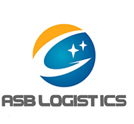
Welcome to ASB Logistics Co. Ltd
Chinese | Contact | Collection | Website Map | Help
NVOCC NUMBER:MOC-NV 06902

Welcome to ASB Logistics Co. Ltd
Chinese | Contact | Collection | Website Map | Help
NVOCC NUMBER:MOC-NV 06902
Contact us

Fax:
0086-755-2512 4462
Email:
inquiry@asb-china.com
chartering@asb-china.com
oogcontainer@asb-china.com
Address:
Chinese Shennan Road East Shenzhen Hongchang square 2110-2111

Browse:3630
From:ASB
Time:2016-03-15
Trade patterns in the product tanker market are ever so changing, most recently as a result of the global rout in oil prices. In its latest weekly report, shipbroker Gibson noted that “the anticipated rationalisation of European refining capacity has been put on hold in the face of strong margins whilst setbacks to various greenfield refining projects have altered views on the evolution of global product flows. Recently the IEA released their Medium Term Oil Market Report which has of course been revised to take account of changing markets. Looking at the detail it can be seen that the expectations for regional balances have, in some cases, changed substantially”.
According to Gibson, “one of the major areas of change concerns Asia. Until recently it was anticipated that Asia might have a 1.0 mbd deficit of light distillates (Gasoline/Naphtha) by 2020, however the IEA’s recent projections now point to a massive 2.8 mbd deficit by 2021, pointing to a substantial import reliance. In our naphtha report earlier this year we highlighted how supportive a 1.0 mbd deficit might be, and thus news that this deficit could nearly triple bodes particularly well for products trade. To identify how supportive this development might be, one must look towards to the regions which are net long on lighter distillates, namely Europe and the Middle East. Imbalances will also remain a feature of the middle distillates market”, said the shipbroker.
However, as Gibson pointed out, “whilst Europe is set to remain structurally long on light distillates such as gasoline and naphtha, the opposite is true for middle distillates (i.e. gasoil/jet) where projections indicate a substantial deficit of 2.0 mbd by 2021. In short, Europe will have a significant deficit of middle distillates by 2021, being heavily import reliant. However, with other regions increasingly long on the grade, there will be a fight for market share with the main suppliers being the Former Soviet Union (FSU), US and Middle East. Interestingly, despite Russia remaining long on middle distillates, constant changes to fiscal policy make the longer term picture less predictable. However, under the current scenario Russian refineries are expected to cut runs in response to tax changes, whilst demand growth is also expected to recover over the medium term. Thus exports of all clean products from Russia could come under pressure although FSU states are set to remain significant exporters”, said Gibson.
The shipbroker added that “other regions will also be short on the fuel, with Africa and Latin America both remaining large importers. The Asian middle distillate market will also evolve. Last year Asia was a net exporter of middle distillates, but by 2021 Asia slips into a deficit moving to become a net importer. Developments in India should also be monitored closely. In India, refinery capacity additions have not been enough to keep pace with surging demand and thus exports have fallen whilst import demand has risen. Additionally, with increased petrochemical capacity coming online in the future, not only will India’s demand for naphtha continue to increase, its exports of clean products are likely to face further declines. Importantly for product tanker owners, the IEA stated that oil product flows will continue to grow at faster pace than crude flows, supported by widening regional imbalances. On balance, these imbalances are structurally supportive for the product tanker sector”, Gibson concluded.
Meanwhile, in the crude tanker market this week, in the Middle East, Gibson noted that “at the end of last week sentiment had started to harden, but needed a sustained period of concentrated bargain hunting to convert into higher rates and that is indeed what happened. Heavy activity, combined with March availability being severely compromised by ongoing delays, mainly in China, allowed the market to inflate, and then jump significantly higher to ws 95 to the East, and to around ws 50 to the West. The spike may well continue over the near term but eventually the severe pinch-point catalyst will be superseded by a more balanced flow of tonnage back into the area. Suezmaxes started flat, but busy Aframax fixing for short term storage in the East began to open up similar opportunities on this size, and rate ideas began to firm towards ws 100 to the East, and to mid ws 40s to the West. Aframaxes didn’t find much local interest, but the ongoing demand for storage in the East will continue to provide alternatives, and support, to the market, and rates to Singapore are unlikely to show at any less than 80,000 by ws 125 in the short term”, concluded the shipbroker.
Nikos Roussanoglou, Hellenic Shipping News Worldwide
 Bulk ships dying younger and faster...
Bulk ships dying younger and faster... China firms push for multi-billion doll...
China firms push for multi-billion doll... Newbuilding prices start retreating on ...
Newbuilding prices start retreating on ... Boxship Deployment Trends: New Loca...
Boxship Deployment Trends: New Loca... Newbuilding orders focused on specializ...
Newbuilding orders focused on specializ... Tankers: Asian VLCC freight rate d...
Tankers: Asian VLCC freight rate d... Dry bulk shipping fleet will grow by 1....
Dry bulk shipping fleet will grow by 1.... Dry bulk sectors struggling due to exce...
Dry bulk sectors struggling due to exce... Capesize slippage at 50% of orderbook...
Capesize slippage at 50% of orderbook... Dry Bulk Market: Finding the silver ...
Dry Bulk Market: Finding the silver ... Newbuilding activity grinds to a halt...
Newbuilding activity grinds to a halt... Oman Port Signs Iran Trade Deals...
Oman Port Signs Iran Trade Deals... Why a story about bulk shipping matters...
Why a story about bulk shipping matters... Global spot container rates hit record ...
Global spot container rates hit record ... More Mishaps on the Mississippi...
More Mishaps on the Mississippi... Asia Dry Bulk-Capesize Rates Flat ...
Asia Dry Bulk-Capesize Rates Flat ... Port of New York and New Jersey Co...
Port of New York and New Jersey Co... Pace of Bulker Scrapping is Faster t...
Pace of Bulker Scrapping is Faster t... China-owned ships: fleet expansion acce...
China-owned ships: fleet expansion acce... Rotterdam Port: Joint approach for th...
Rotterdam Port: Joint approach for th...
 sweep wechat
sweep wechat